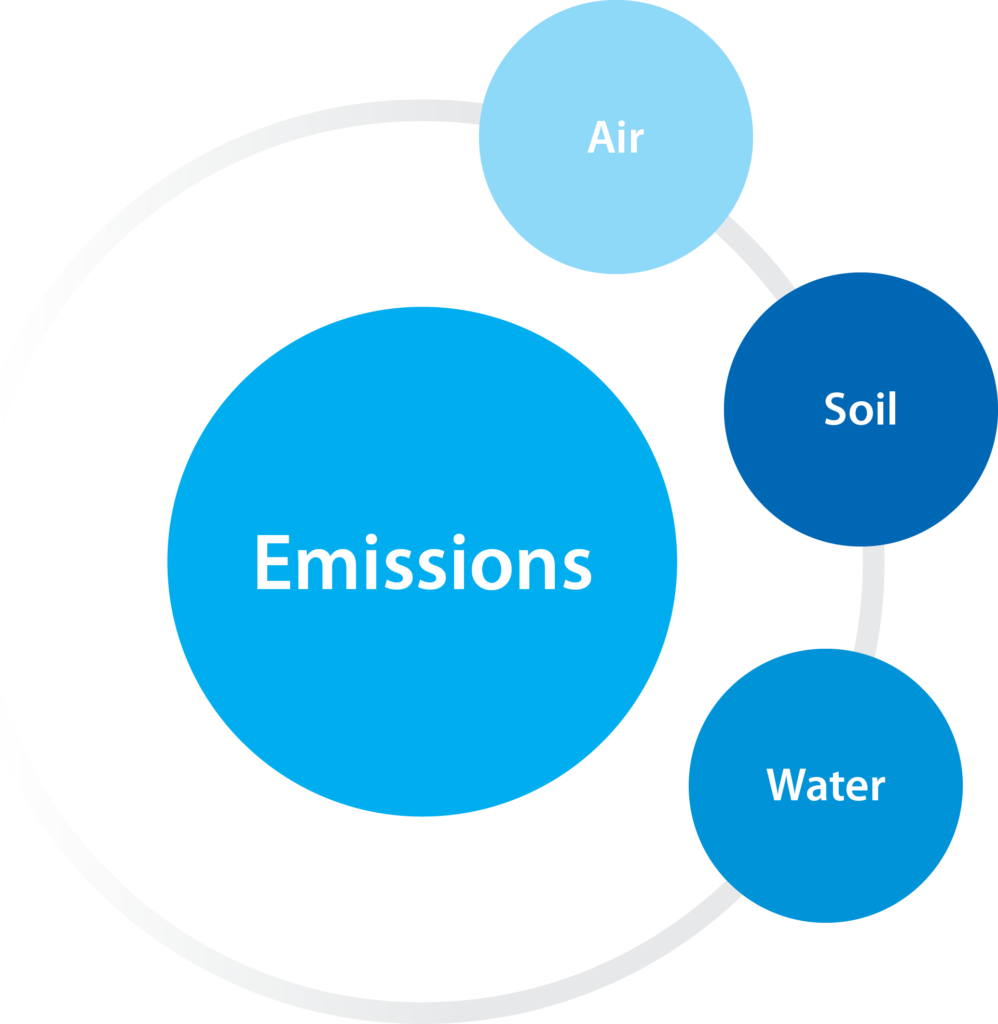
Emissions
Emissions is a pressing sustainability issue for nearly every sector, including the vinyl industry. Since 1987, our vinyl chloride monomer (VCM) emissions have decreased by 84%, but we strive to improve this as well as reduce emissions in other ways.
This impact category is focused on three priority areas:
- Emissions to air
- Emissions to water
- Emissions to soil
The Emissions Landscape Today
Each year, the Vinyl Institute (VI) proudly recognizes facilities in the PVC, EDC/VCM, plasticizer production, additive production, and chlorinated PVC compounding categories that have achieved outstanding environmental performance, which is based on the U.S. Environmental Protection Agency’s (EPA) National Emissions Standards for Hazardous Air Pollutants (NESHAP), other regulatory permit performance, and the EPA’s Toxic Release Inventory (TRI) data for air and water. In 2020, VI recognized 10 facilities that had outstanding environmental performance for five or more consecutive years with Environmental Excellence awards.
Education is also a key component in helping our members on their continuous improvement journey for the Emissions impact category. In 2020, the Emissions Task Force held multiple emissions-related workshops for our members, including a seminar lead by Sustainable Solutions Corporation that discussed how and what to benchmark, setting goals, developing a plan, and how companies can hold themselves accountable.
Other educational workshops included one focused on Operation Clean Sweep (OCS), which is an international program designed to prevent resin pellets, flakes, and powder loss, and help keep pellets out of the marine environment. In 2020, VI signed on to the program and is committed to the principles of the program and working with member companies to achieve the goal of zero pellet, flake, and powder loss.
Our Plan to Reduce Emissions Further
Building on past successes in reducing vinyl resin manufacturer emissions, the Vinyl Sustainability Council (VSC) has an ongoing project to aggregate industry data across the supply chain for the purpose of establishing a baseline for further emission reductions. The Emissions Task Force is setting realistic and achievable goals, which require good data and developing a means to measure results on an ongoing basis.
The infrastructure to accomplish this across the supply chain has previously not existed, and the Emissions Task Force has spent the last two years constructing it. The goal is to complete this project in 2021 and to set emissions reduction targets to begin working towards in 2022.
Apart from VCM emissions, our emissions strategy wouldn’t be complete without addressing carbon. In an effort to increase the transparency of the embodied carbon of vinyl materials, the Emissions Task Force is working with Building Transparency to populate the Embodied Carbon in Construction Calculator (EC3).
This work is initially being conducted in collaboration with the Resilient Floor Covering Institute and the Vinyl Roofing Division of the Chemical Fabrics and Film Association. When this work is complete specifiers will have visibility regarding the relative embodied carbon of materials in these two product categories.
